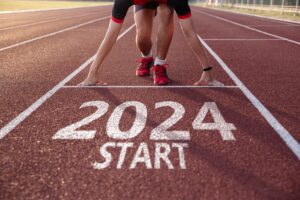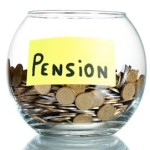
By Steve Lowrie, CFA
Special to Financial Independence Hub
You might assume, the more experienced a financial professional is, the more accurate they can be with their year-end forecasts. Personally, I’ve never tried to predict which hot or cold stocks, bonds, sectors, or market sentiments to chase or flee each year. Instead, the more experience I’ve gained, the more firmly I believe in the Timeless Financial Tips I shared throughout 2023. For me, they serve as the best guide for “predicting” what investors should expect in 2024.
So, considering everything I’ve learned in 2023 (plus the quarter-century prior), I predict …
We cannot possibly predict how 2024 markets will perform.
That’s my expert forecast, and I’m sticking to it. I will, however, add one more prediction, about which I am nearly as certain …
Over time (think multiple years), capital markets WILL deliver positive returns to those who consistently participate in their expected growth.
The 2023 Allure of 5% GIC Returns
If anything, 2023 offered fresh lessons on why it’s better to stick with the financial fundamentals and avoid the perils of market-timing.
As you may recall, we were still licking our 2022 wounds in January 2023, after experiencing an unusually perfect storm of negative annual returns from stocks AND bonds, along with continued high inflation. How unusual was 2022? I looked for the last time investors had experienced across-the-board negative annual returns, plus steep inflation and couldn’t find an example of this, at least in my career. 1994 was the last time both stock and bond returns were negative, however Canadian Inflation (CPI) was a scant 0.25% that year.
Given the 2022 backdrop, no wonder many investors were drawn to GICs and their alluring 5% interest rates in 2023.
It is true, GICs can be helpful for your rainy day funds and similar cash reserves that are awaiting their spending fate. But in 2023, I also saw people using (or, more accurately, abusing) this vehicle to sideline investable cash indefinitely, waiting for seemingly better days to jump into the market. Worse, some investors might have sold off portions of their existing investment portfolio to chase after GIC rates.
Safe Harbors can be a Risky Bet
Unfortunately, waiting for “better” markets before investing or reinvesting according to plan is still market-timing by any other name. And as I’ve covered before, market-timing ignores myriad investment fundamentals.
Among the most important insights to take to heart is how rapidly market tides can turn, leaving the unprepared out of luck. As one of my financial planning colleagues recently described:
“Small hinges swing big doors. [Market] Prices are brutish, irreverent, and unsympathetic to investors putzing about on the sidelines.” – Rubin Miller, Fortunes & Frictions
This message was on clear display in 2023. Talking about swinging markets! I’m willing to bet few, if any of us were expecting such strong annual returns for 2023, especially since most of the reward hinged on a year-end pop.
And yet, it shouldn’t really have come as such a big surprise. It’s exactly how global markets have repeatedly performed over time. It just seems as if investors forget this fundamental every time markets take a break from their historically uphill climb. Continue Reading…







